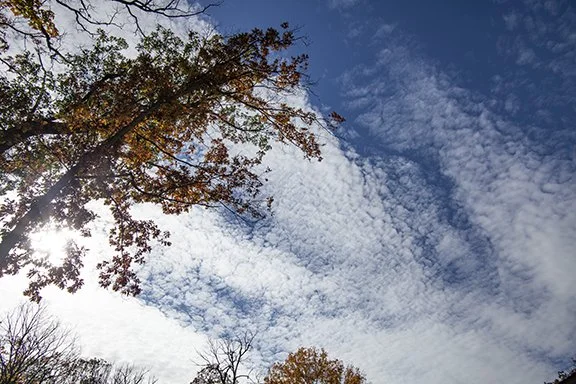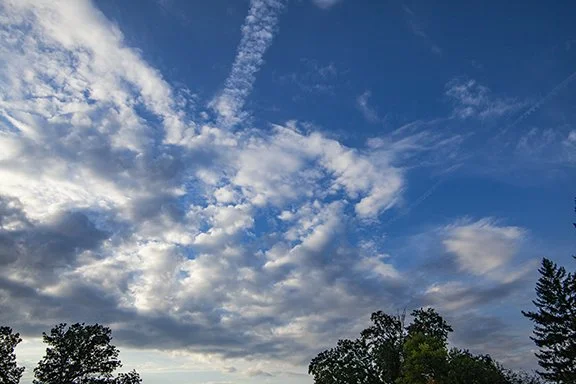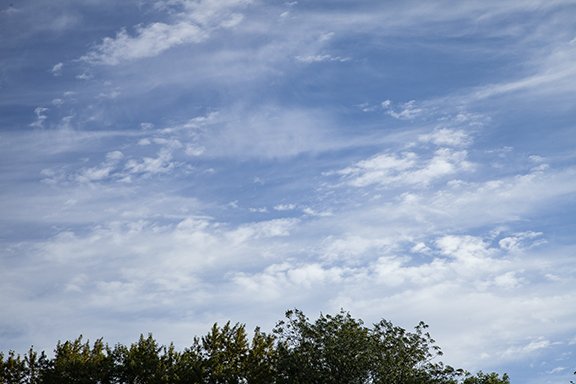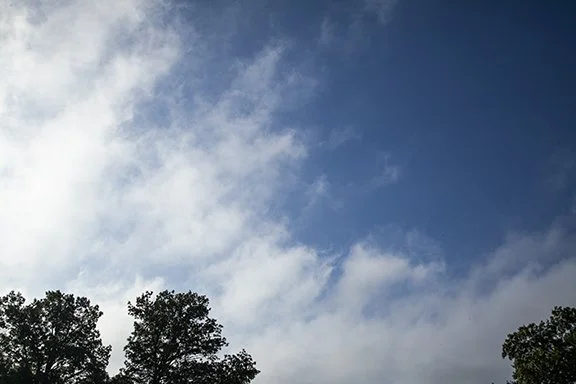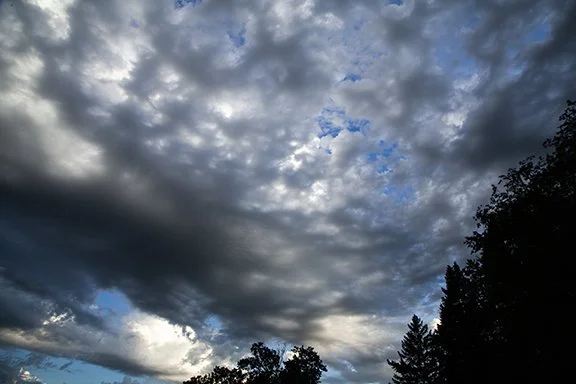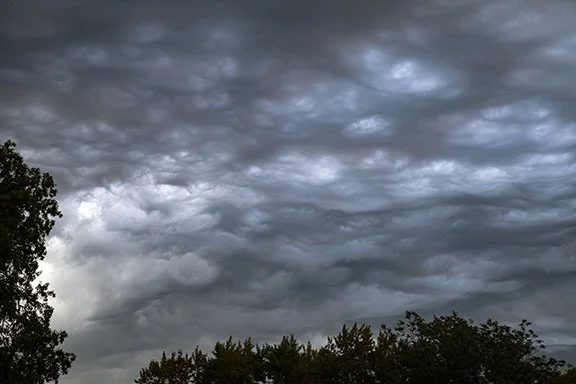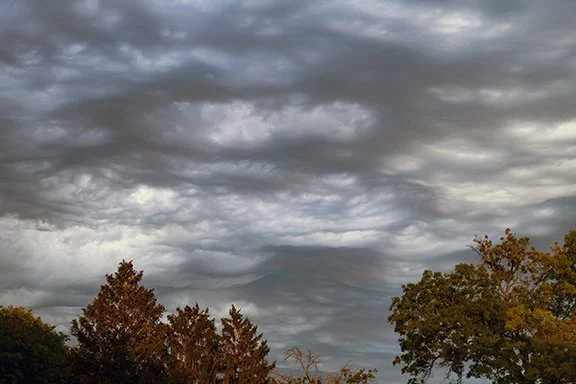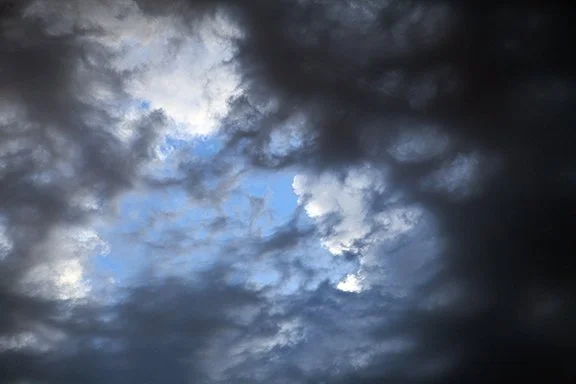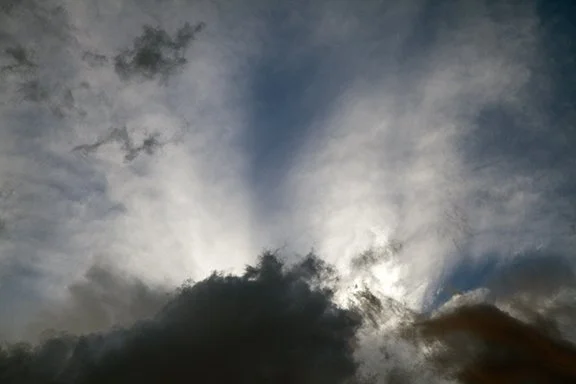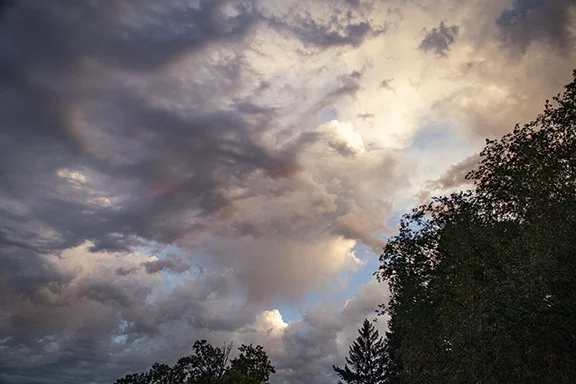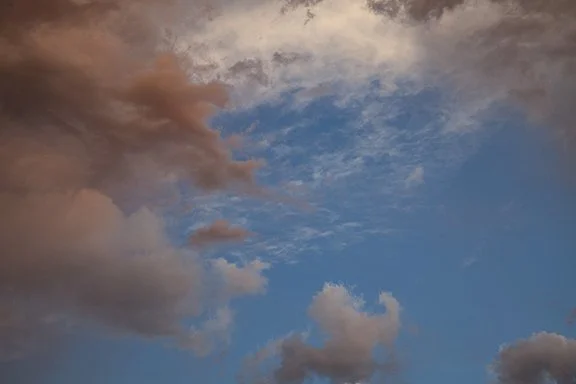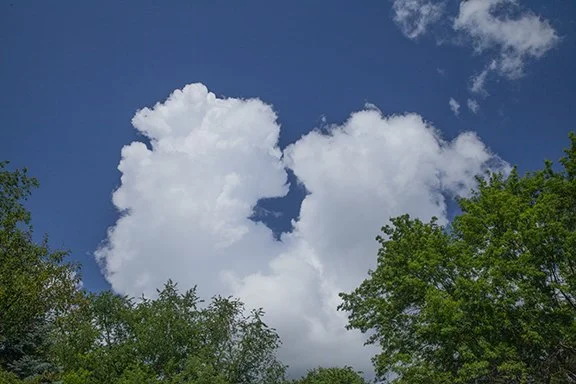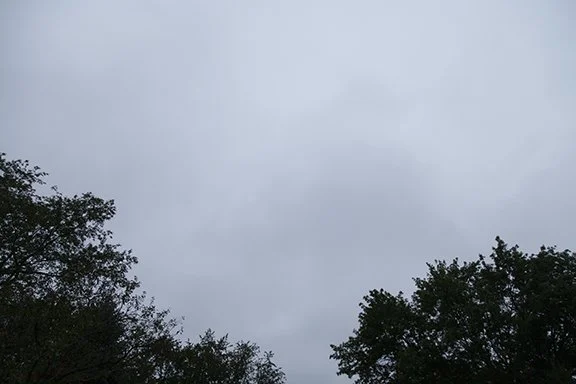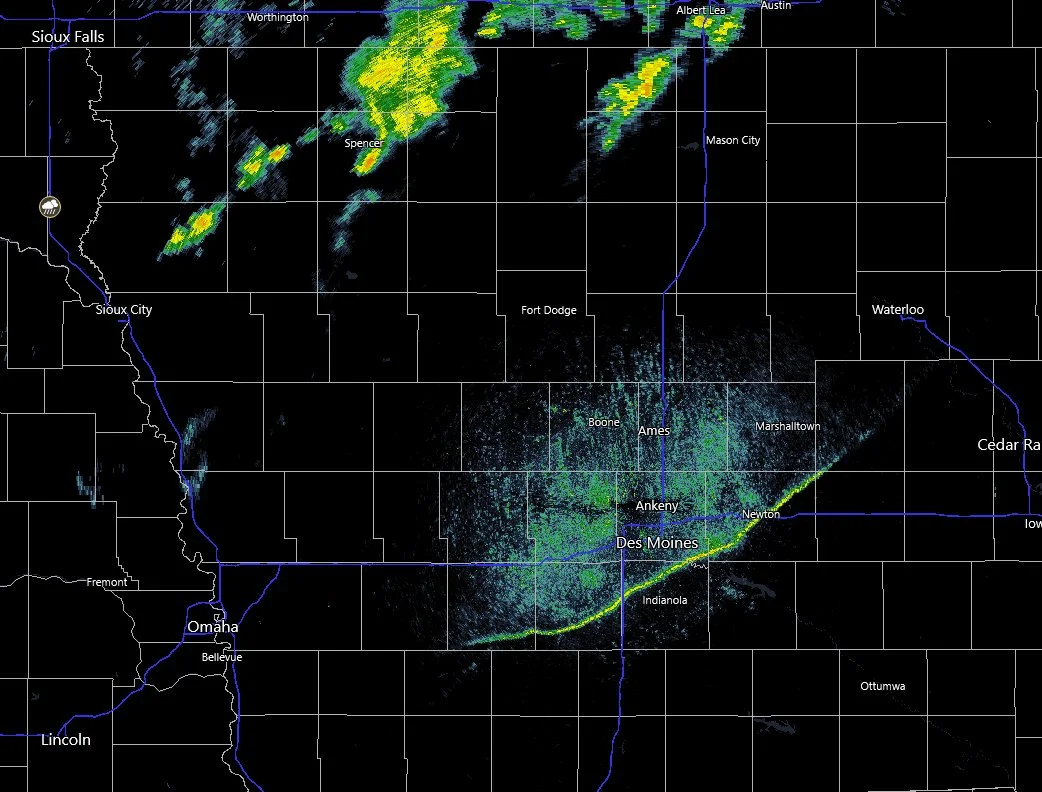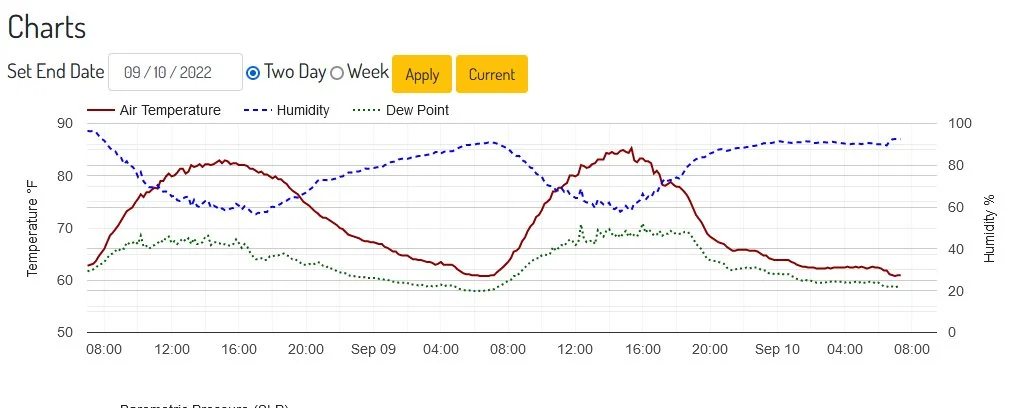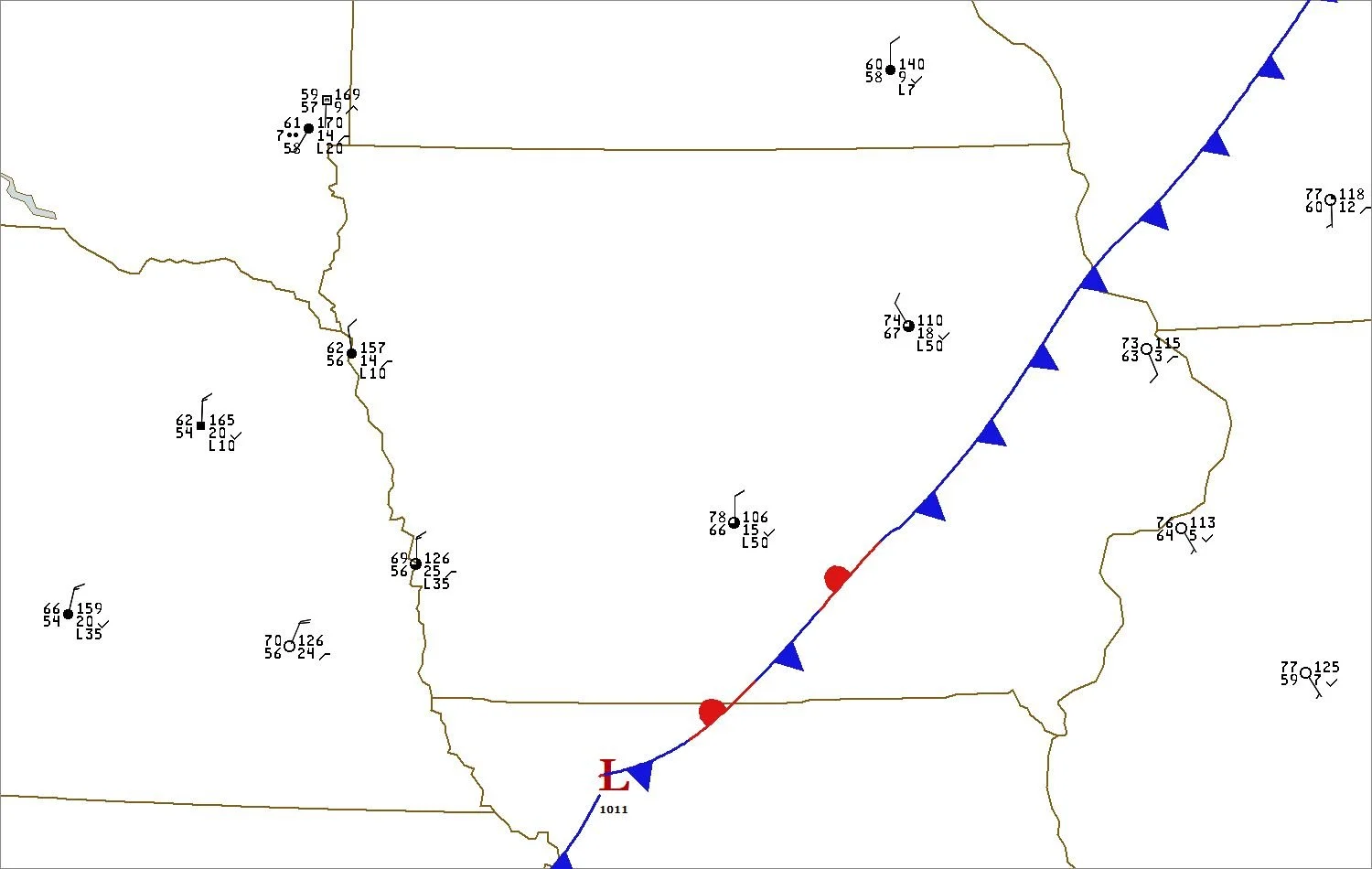One Day, Three Cloud Types
/The top photo in today’s post show Cirrus fibratus clouds. The clouds are made of ice crystals that form a pattern of thin filaments. A puffy Cumulus humilus cloud is in the lower left corner with a fractured cumulus humilus in the upper left.
In the second photo we see Cirrostratus and Cirrus fibratus in bands. The Cirrostratus have formed a continuous cloud sheet while the Cirrus fibratus are the filaments with blue sky visible through them. There is a faint hint of a halo to the left of the Sun in a vertical arc. In the lower center are very small Cumulus humilus.
The second photo is a sky filled with Stratocumulus in a cloud deck with both Cumulus and Stratus characteristics. It was a cold windy day and the cloud deck formed in the cold air mass during the afternoon, covering the Cirrus above.





